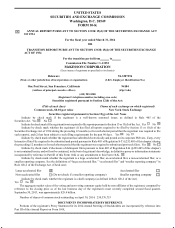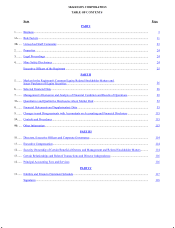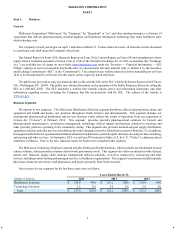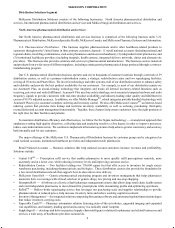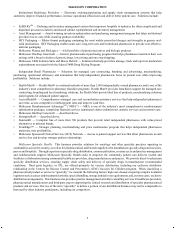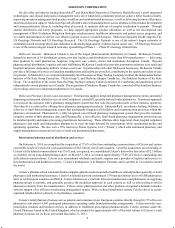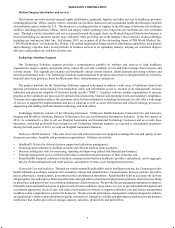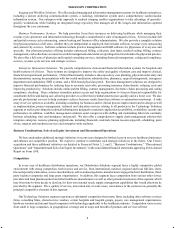McKesson 2014 Annual Report Download - page 14
Download and view the complete annual report
Please find page 14 of the 2014 McKesson annual report below. You can navigate through the pages in the report by either clicking on the pages listed below, or by using the keyword search tool below to find specific information within the annual report.
McKESSON CORPORATION
11
Item 1A. Risk Factors.
The risks described below could have a material adverse impact on our financial position, results of operations, liquidity and
cash flows. Although it is not possible to predict or identify all such risks and uncertainties, they may include, but are not limited
to, the factors discussed below. Our business operations could also be affected by additional factors that are not presently known
to us or that we currently consider not to be material to our operations. The reader should not consider this list to be a complete
statement of all risks and uncertainties.
Changes in the United States healthcare industry and regulatory environment could have a material adverse impact on our
results of operations.
Our products and services are primarily intended to function within the structure of the healthcare financing and reimbursement
system currently being used in the United States. In recent years, the healthcare industry in the United States has changed
significantly in an effort to reduce costs. These changes have included cuts in Medicare and Medicaid reimbursement levels,
consolidation of pharmaceutical and medical-surgical supply distributors and the development of large, sophisticated purchasing
groups. We expect the healthcare industry in the United States to continue to change and for healthcare delivery models to evolve
in the future.
Changes in the healthcare industry’s or our pharmaceutical suppliers’ pricing, selling, inventory, distribution or supply policies
or practices could significantly reduce our revenues and net income. Due to the diverse range of healthcare supply management
and healthcare information technology products and services that we offer, such changes could have a material adverse impact on
our results of operations, while not affecting some of our competitors who offer a narrower range of products and services.
The majority of our U.S. pharmaceutical distribution business’ agreements with manufacturers are structured to ensure that
we are appropriately and predictably compensated for the services we provide; however, failure to successfully renew these contracts
in a timely and favorable manner could have a material adverse impact on our results of operations. In addition, branded
pharmaceutical price inflation can be the partial economic basis of some of our distribution business agreements with pharmaceutical
manufacturers. If the frequency or rate of branded price increases slows, it could have a material adverse impact on our results
of operations.
In addition, we distribute generic pharmaceuticals, which can be subject to both price deflation and price inflation. In recent
years, our financial results have improved from our generic drug offerings combined with an increase in the number of generic
drug formularies available in the marketplace. In fiscal year 2015, we anticipate the number of branded to generics conversions
to increase as compared to the prior year. Continued volatility in the availability, pricing trends or reimbursement of these generic
drugs, or significant fluctuations in the rate of increase in the number of generic drugs, could have a material adverse impact on
our results of operations.
Generic drug manufacturers are increasingly challenging the validity or enforceability of patents on branded pharmaceutical
products. During the pendency of these legal challenges, a generics manufacturer may begin manufacturing and selling a generic
version of the branded product prior to the final resolution of its legal challenge over the branded product’s patent. To the extent
we source, contract manufacture, and distribute such generic products, the brand-name company could assert infringement claims
against us. While we generally obtain indemnification against such claims from generic manufacturers as a condition of distributing
their products, there can be no assurances that these rights will be adequate or sufficient to protect us.
The healthcare industry is highly regulated, and further regulation of our distribution businesses and computer-related products
and services could impose increased costs, negatively impact our profit margins, and the profit margins of our customers, delay
the introduction or implementation of our new products, or otherwise negatively impact our business and expose the Company to
litigation and regulatory investigations.


